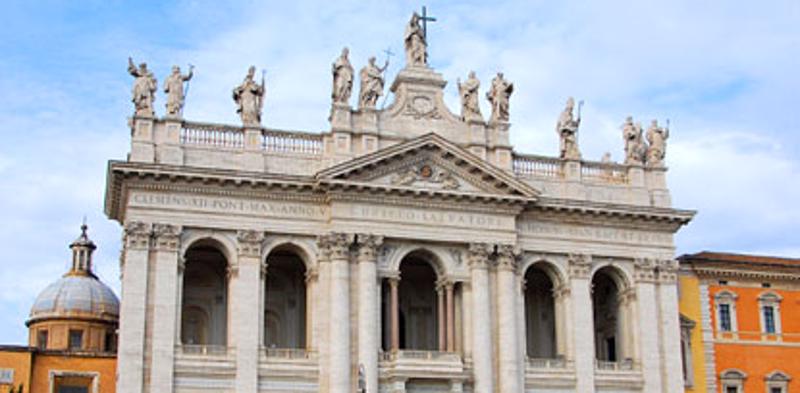My diary
http://www.vatican.va/various/basiliche/san_giovanni/vr_tour/index-en.html
Saint John’s Lateran is a cultural landscape that signifies the role and influence of the Church in Italy and the details behind monumental landscapes, and political landscapes. The history of the building is significant since it is a church commissioned by Constantine to physically signify the newly Christian republic. When an Emperor passes a creed, it can often been ignored- but when there is a physical representation of the law, every person who sees it will not be able to ignore it. This is the power and necessity of cultural landscapes. What many people do not know is Saint John’s Lateran is the hearth of the Church today; it is the hinge point between
kmullen1
22 chapters
16 Apr 2020
Rome 2017: (18) Saint John’s Lateran
http://www.vatican.va/various/basiliche/san_giovanni/vr_tour/index-en.html
Saint John’s Lateran is a cultural landscape that signifies the role and influence of the Church in Italy and the details behind monumental landscapes, and political landscapes. The history of the building is significant since it is a church commissioned by Constantine to physically signify the newly Christian republic. When an Emperor passes a creed, it can often been ignored- but when there is a physical representation of the law, every person who sees it will not be able to ignore it. This is the power and necessity of cultural landscapes. What many people do not know is Saint John’s Lateran is the hearth of the Church today; it is the hinge point between

religion and politics. It is the physical location where all the decisions are made about Churches around the world. There is a statement being made by the propensity of the size of the structure. It is not a small underground church, it is a beautiful bright building covered in saints to signify the blessings bestowed on the Church. This building signifies the influence of the Church. In studying the Saint John’s Lateran it is crucial to understand the choice of choosing Saint John’s Lateran to be the hearth instead of the Saint Peter’s. In my opinion, this decision was created to preserve the purity of the building without tension in the middle of the tourist platform. It is like in the United States, the military decisions are not made at the White House, and they are made outside at the Pentagon. It encourages the check and balance process that bodies and institutions of power must preserve.
1.
Rome 2017: Overview
2.
Rome 2017: (1) The Colomn of Trajan
3.
Rome 2017: (2) The Capitoline Wolf and The Twins
4.
Rome 2017: (3) The Alter of Peace (Ara Pacis)
5.
Rome 2017: (4) The House Of Vestal Virgins
6.
Rome 2017: (5) The Bust of Constantine
7.
Rome 2017: (6) The Equestrian Sculpture of Marcus Aurelius
8.
Rome 2017: (7) The Miliarium Aureum
9.
Rome 2017: (8) The Dying Gaul
10.
Rome 2017: (9) The Head of Lucius Junius Brutus
11.
Rome 2017: (10) The Boxer at Rest
12.
Rome 2017: (11) Augustus of Prima Porta
13.
Rome 2017: (12) Saint Paul's Statue
14.
Rome 2017: (13) Moses
15.
Rome 2017: (14) Santa Sabina
16.
Rome 2017: (15) The Holy Stairs
17.
Rome 2017: (16) The School of Athen's
18.
Rome 2017: (17) Disputation over the Holy Sacrament
19.
Rome 2017: (18) Saint John’s Lateran
20.
Rome 2017: (19) Danae
21.
Rome 2017: (20) Victor Emmanuel II
22.
Rome 2017: Conclusion
Share your travel adventures like this!
Create your own travel blog in one step
Share with friends and family to follow your journey
Easy set up, no technical knowledge needed and unlimited storage!
© 2025 Travel Diaries. All rights reserved.